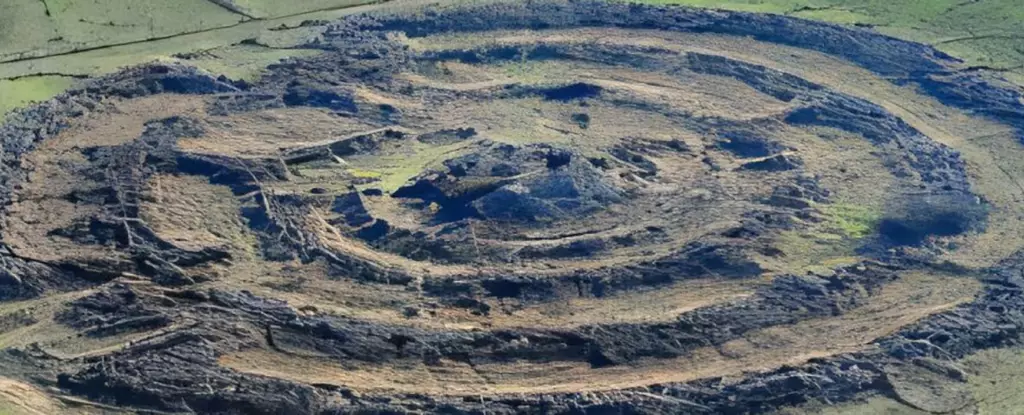Rujm el-Hiri, often referred to as the ‘Wheel of Ghosts,’ is a captivating megalithic structure located in the Golan Heights in southwest Syria. This ancient site has long been hailed for its potential astronomical significance, as past research indicated that its construction aligned with celestial bodies. Enthusiasts theorized it to be an early observatory, contributing to our understanding of ancient cultures and their relationships with the cosmos. However, recent investigations challenge this narrative, suggesting that understanding the purpose and alignment of Rujm el-Hiri may be far more complex than previously envisioned.
A collaborative study by researchers from Tel Aviv University and Ben-Gurion University of the Negev has provided groundbreaking insights into the geological history and shifting orientations of Rujm el-Hiri. Utilizing a blend of contemporary scientific techniques—geomagnetic analysis, tectonic reconstruction, and remote sensing—the team concluded that the stone structure has not maintained a consistent orientation with astronomical objects over millennia. This finding invites profound questions regarding the site’s original purpose.
The research reveals that geological transformations in the region have dramatically altered Rujm el-Hiri’s position over thousands of years. According to the paper published by the researchers, the site has rotated counterclockwise and relocated by significant distances, which complicates the notion of its original orientation aligning with specific celestial markers. As stated in their findings, this shift was attributed to tectonic activity that has continuously reshaped the landscape of the Golan Heights.
Estimates on the construction timeline of Rujm el-Hiri suggest that its origins may trace back to approximately 4500 BCE. This period marks the dawn of significant architectural endeavors in this region, with subsequent additions and renovations continuing until the Bronze Age between 3600 and 2300 BCE. The organization of the site, characterized by a central cairn encircled by concentric circles of basalt stones, spans nearly 150 meters in width. The presence of walls and tumuli nearby further indicates that the site served multifaceted roles throughout various epochs.
Intriguingly, archaeological practices often involve the reworking and adaptation of existing structures, and Rujm el-Hiri is no exception. The ongoing development of the site over centuries suggests a living history where communities continuously adapted their environments. By layering new features over older ones, these groups contributed to a dynamic landscape that reflects changing cultural values and practices.
The recent findings pertaining to Rujm el-Hiri exemplify a significant advancement in integrating modern scientific techniques in archaeological investigation within the Southern Levant. This research represents a pioneering effort to employ high-tech analysis in unraveling the complexities of ancient structures. As these methodologies evolve, they not only enhance our comprehension of Rujm el-Hiri but also pave the way for future discoveries across the globe.
With comprehensive geophysical evaluations revealing the layered narratives of sites such as Rujm el-Hiri, there exists a tantalizing prospect for correlating these findings with megalithic structures in diverse global locations. The international implications of this study underline the need for comparisons that extend beyond local confines, enriching our collective understanding of ancient human civilization and its monumental expressions.
The researchers have speculated that insights garnered from examining Rujm el-Hiri could provide a foundation for developing artificial intelligence models capable of identifying analogous human-made structures via satellite imagery. This potential application signifies an exciting intersection of technology and archaeology. By harnessing AI, researchers could unlock hidden historical sites, enabling a higher degree of exploration and understanding in areas that have yet to be thoroughly documented.
As the narrative about Rujm el-Hiri continues to evolve, it invites both scholarly curiosity and public interest. Understanding its true purpose and significance will require further investigation and interdisciplinary collaboration. The revelations from recent studies may shift our perceptions not only of Rujm el-Hiri but of the ancient world as a whole, revealing a past rich in complexity and interconnectedness.


Leave a Reply